The pine tree is one of the most overlooked natural resources as it has multiple survival uses. The entire tree is edible, from the bark to the pine cones. You can make pine needle tea or use the roots as cordage.
The most versatile item is the pine resin, you can use it to make candles, glue, treat wounds, to start a fire, a water-proof sealant and many more.
To tap a pine tree, use an axe or a machete to cut the bark. Tie a bucket around the tree at the bottom of your area. The bucket must stay firm against the tree as it will collect the pine sap. Hack “V” shaped notches in the cleared area pointed to the bucket. You can gather even more sap if you stick a beak like metal object to direct the sap to the bucket.
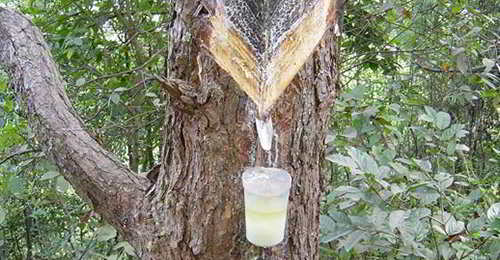
Pine candles shine brightly and give you one of the greatest scents—pine wood.
Necessary Ingredients
- At least one container to melt the resin in (a tin can in this case)
- Another container that will be used for the candles
- Some rope to make the wick
- A knife
- A fireplace or someplace to melt the resin
- And, of course, the resin

I thought that I’d use more types of containers. It’s always fun to experiment.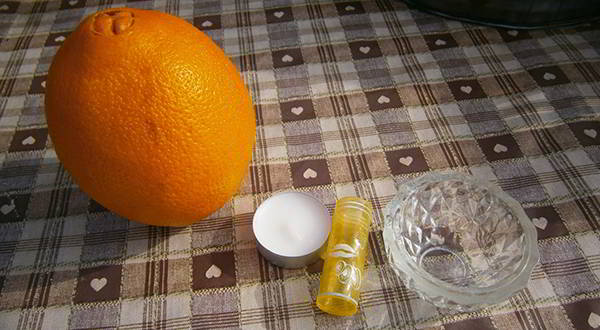
Step One: Melting the Resin
After you light the fire, fill your container with the resin. Don’t be scared to fill it to the brim as it will melt down and fill in all the gaps.
Also, it will be even less if you want to filter it out, so it’s fine to go all out.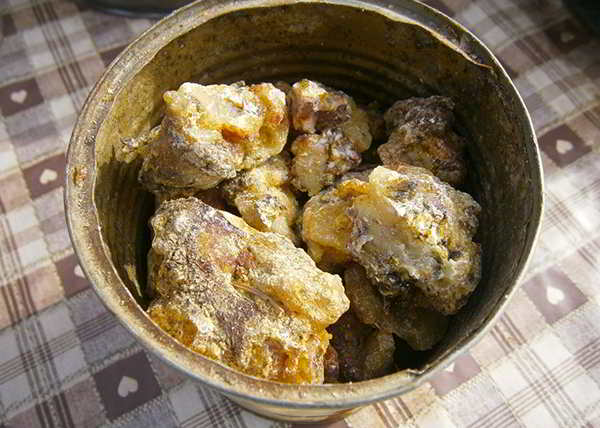
WARNING: The resin might catch on fire if the heat is too high. Just take it off the fire with some pliers, and blow the flames out. Make sure you never hold the can—it gets extremely hot. Be sure to stand next to it while it melts as it may burn to ash if you’re not careful.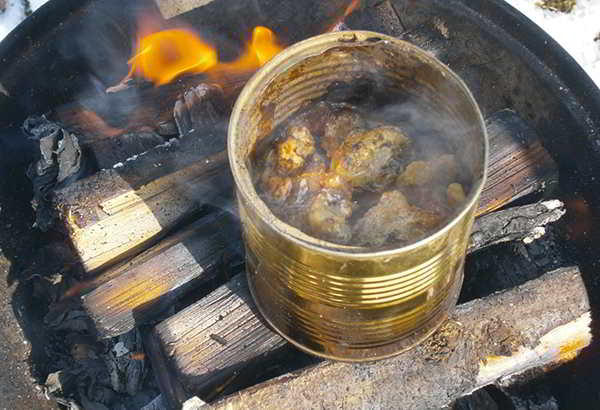
While all the resin melts, start working on getting the candle holders ready.
Step Two (Optional): Filtering Out All the Yuck
After melting it all down, you will need another container and something to filter out the bark and the pine needles. I used an old fish landing net.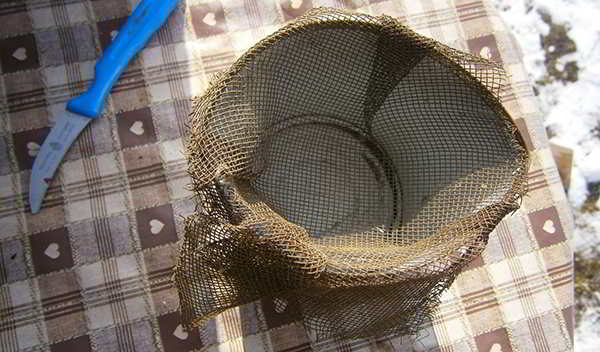
Get the filter ready, and pour the hot resin over it and into the container. You will need to work quickly because it cools off fast and might clog up the holes of the filter. For this to work, you will need to move the resin around a little bit so that it can go down into the container.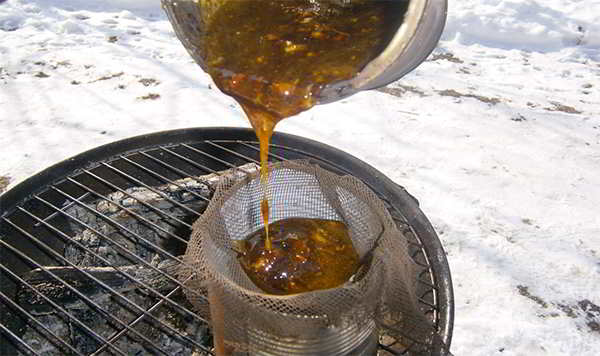
Step Three: Making the Candles
After getting your container ready and cutting the rope to the perfect size, you are ready to make your candles. You might have to put the filtered resin back onto the fire to get it ready for pouring once again.
Pour a little bit of hot resin into the candle holder; it will help to fix the wick.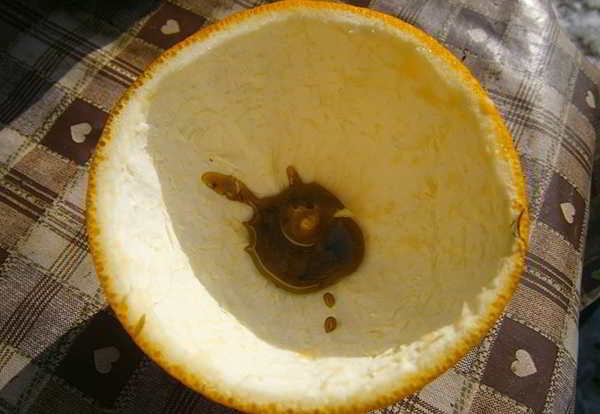
After this, dip the rope into the resin quickly for it to soak some up. This is necessary to get the wick standing straight while you’re pouring the resin.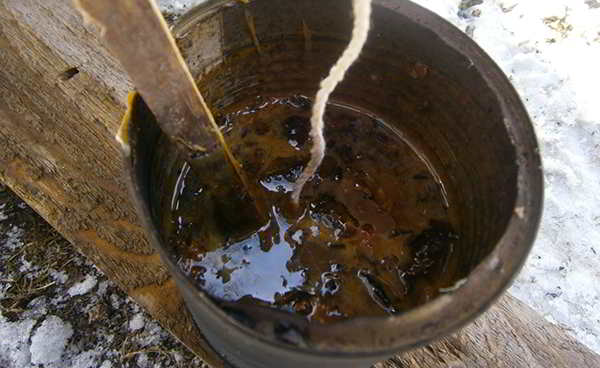
Now you just have to put the wick in and leave it to rest for a few seconds so it can harden.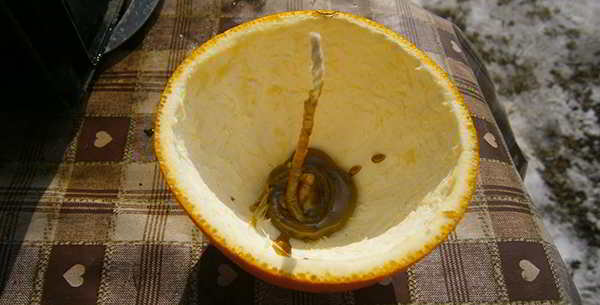
Finally, you will have to fill it up. You might also need to keep the wick straight with your hands. It will melt the resin that’s holding it and may try to fall down; just use toothpicks to keep it at the same spot until it hardens, which will take roughly 10–15 minutes.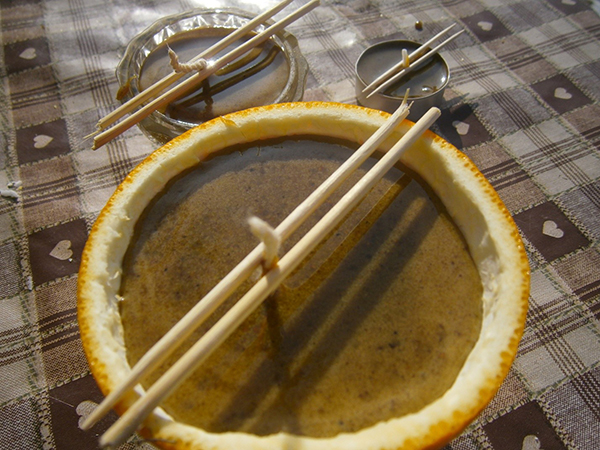
Enjoy your homemade pine resin candles.
You may also like:
 Never Do This When You Leave Your Property
Never Do This When You Leave Your Property
The Strange DIY Device That Keeps Electricity Flowing When The Grid Goes Down (Video)


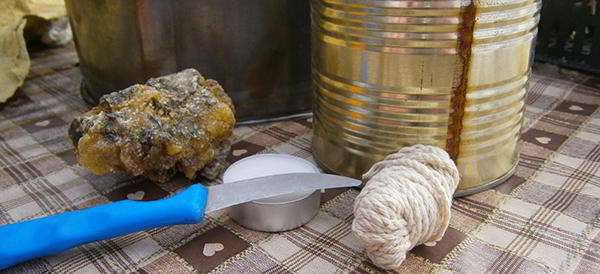










What happens to the resin as the candle wick burns?
It works as normal wax, so just melts down, it needs a lot of heat to burn to crisp
The resin will alight as it’s very flammable. Burn only outside!
It pretty quickly all lights on fire and burns your shelter down.
You have to boil the extremely volatile and flammable gases and liquids out of the resin. And after those HOURS of boiling, It may still all ignite. Especially if the whole container it’s in is flammable (like the orange peel used in that example….
Good! Thank you for this simple way to make candles! Love your site. So many GREAT tips.
If you cover your collection bucket/can with a lid with a small cut-out where the “beak” is to let the resin drip in, you won’t have to fool with the filtering task. You might have a speck or needle or two to pick out by hand if you feel like it. Wire or tape the lid on so it won’t blow away.
Thanks so much for the information…..adding this one to my collection.
Doesn’t work. Followed this process, and it all worked fine – until I lit the candle. The whole surface of the candle caught fire. And no wonder – pine resin is highly flammable. Wax is not. NOT the same thing.
Then you did it wrong. I won’t tell you how to make it, you’ll have to experiment yourself.
maybe you could mix the pine resin with wax, give it a try.
We have mostly fir trees on the west side of the mountains in Washington. Will this work as well with fir as with pine?
I never tried making candles with fir resin but I don’t see any reason why it wouldn’t work.
If you can get the runny pitch before it hardens into chunks, that is really nice to work with. A floating wick might be good? Otherwise, it might catch the whole surface on fire. Really fresh pitch comes somewhere between olive oil and gasoline for flammability. Turpentine is quite volatile.
We did this back in the 30″s when I was a kid in Idaho.
Lots of white pine to choose from.
Thanks for the memory.
Wow, I love this idea, thanks!
Is there a preferable or specific time of the year to do this?
No. As pine trees are evergreen it doesn’t matter.
This is great but can you use fire trees?
Would like a little more info on the gathering step. Maybe better/more pics.
Do the cuts seal over in time?
Will it kill the tree?
What are best tree types?
Will the cut area keep giving sap, or is it limited?
If done properly tapping will not seriously injure the trees. They can be tapped for well over 20 years, the wood is not damaged during the tapping process.
It’s best find a mature, live, good-sized, tight-barked pine tree for the best results.
Pine trees that will give the largest amount of resin : White Pine, Jack Pine, Blue Spruce.
The cut area will give limited sap. But in a couple of months you can harvest again.
Don’t cut the tree. There’s plenty of trees out there that are already damaged by wind, lightning, etc. All you need to do is walk around, walk a trail, and spot it. Bring a butter knife to pry the little, hard amber globules from the tree. Good luck and enjoy!
How much do these candles smoke ? I know in a survival
situation it wouldnt matter. But I dont want to soot up my
house just burning a pine pitch candle for the scent.
The candle gives off a strong black smoke.
how to overcome that??
to make the candle less smoky
Thanks in advance
this type of candle should be used outdoors only as the resin has a high flammable content and will burn your house down tried and true even mixed with beeswax it becomes dangerous for indoor use
Lots of great questions. I cant wait to look back for the answers. In my part of Texas we dont have pines, but “mountain cedars” galore. Would this also work with them?
I never used cedar resin but I don’t see any reason why it wouldn’t work.
what about mixing an amount of old candle wax in ? burn cleaner , last longer, ? anybody ?
One idea is to have muffin paper liners ready. After pouring, before setup of Gunk, put some in each liner 1/2 way up. Pull liner top together and twist let harden. put is zip bag to use as firestarter. Use in a jet/rocket stove under a tree to let residue smoke dissipate. It will start faster & get hot level up faster, so no smoke will show. When jet/rocket stove is burning, little to no smoke shows as long as proper wood – sticks are used. (ie: squaw wood – lower limb sticks on trees break it off, no cutting. Doesn’t break? still living green wood!)
where can i buy one ?
This is awesome, thank you so much! I’ve been looking into different sustainable materials to make candles out of, because I don’t have any lard or tallow readily available to me at this point!
Love this idea! Is frankincense or myrrh resin a good resin to use for candles?
hi! I found it very interesting to use the sap to make candles. but what about the pine cones? we need recipes for those also. in fact the cones are easier to collect. thanks in advance.
this type of candle should be used outdoors only as the resin has a high flammable content and will burn your house down tried and true even mixed with beeswax it becomes dangerous for indoor use
Could the pine resin be mixed with the bacon grease to make a less smoky and more indoor friendly candle?
I read this in a book some time ago and did not even think it was possible. Thank you so much for the information and I’m definitely going to try this.
This method of “tapping” does harm the tree. You’re wounding the tree to force the tree to create wound seal to help/heal the damage you’ve caused. I’ve collected pounds and pounds of conifer resin over the years by just taking the drops off the tree underneath the wound. There is no reason to harm the tree with as many trees as we have.
Funny!
I agree with chillbill. The size of the cut I see on your tree photo definitely causes irreparable damage to the tree. The open wound allows bacteria, disease and decay to set into the tree. I doubt any arborist worth his/her salt would recommend that size of cut to a healthy tree and I would not recommend that to someone who has such a stand of trees, if they want to keep them healthy and stable.
Pine pitch has been used for a long time to seal containers, I have an 18th century canteen that is sealed with pine pitch on the inside, it gives the water a nice little zing to it!
Can you blend with beeswax for pine scented but more conventional looking/burning candle
My wick won’t stay lit. Any suggestions?
I think you blended wax with this but did not tell us directly other than showing that small tealight candle in the photo
Two opinions:
(1) Wilderness Woman is totally correct, it should only be used outdoors in terms of how this article presents this subject; and any experimentation should use only small amounts to avoid possible explosions and big fires.
(2) I think the pine sap is too “thicky-sticky” for any re-melted sap (from a flame) to absorb far enough into the wick to keep a wick burning. It would cool down too fast to absorb far. So the problem is both the wick, and the sap fuel’s viscosity. Since the fuel can burn fine without a wick, that appears to be the clue for how to attempt to burn it for light. Burn it in a shallow wide-mouth metal lid or bowl and then place a lantern glass over it, not so close to the flame that it lacks sufficient air (or that it explodes the glass); and set the glass upon flat rocks to allow air-flow to reach the fuel from under a glass. If that works, you may need a bunch of small containers to hold your pine sap, similar to what are called devotion candles that are often poured into small metal tins.
(3) I do not recommend that anyone attempt to mix another liquid fuel into pine sap to decrease viscosity and increase the mixture’s ability to soak up a wick. That is what Refiner’s do, and they do it in huge thick-metal containers with “blow-out” ports on it should an explosion happen.
Don’t even try that unless you are a licensed professional chemist. The burns on you from sticky-hot pine sap would probably kill you, but if not, it would disable you for months after you burn off all your skin on your head, face, arms and hands; and if you survived you would look like a “mummy” wrapped in straps of cloth that would have to be taken off every day to apply stinging disinfectant to your wounds.
If no one has figured out how to work with pine sap for lighting (beyond adding a bit of scent) in the last 200 years, then it is best to use the sap as an accelerant when building a fire using damp wood,
Really old movies (and portraying Africa) from the 1930s – 1950s, show people using sap soaked lengths (strips) of clothing wrapped around thick sticks to be used as torches for night time travel. But they were used in Africa where large wild animals were hunting game at night and when it was dangerous to be walking around. They were an animal deterrent since the trails were well worn and light wasn’t needed. Sometimes the movies would show several torches stuck near the ground (with no flammables underneath) to light up a small perimeter outdoor area. I don’t advise any Americans to try this except maybe in your own grassy backyard, because Americans are really really… S T U – – -! I was plenty that way when I was young also. And don’t let young kids see you try this, because of the old saying, “Monkey See, Monkey Do”.